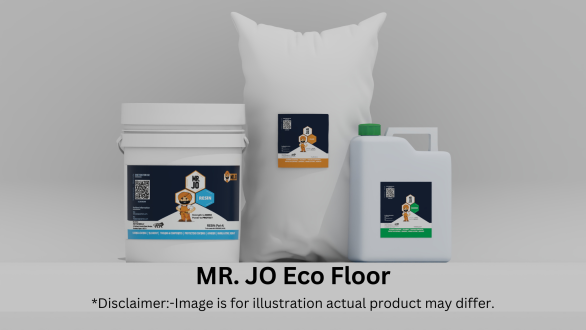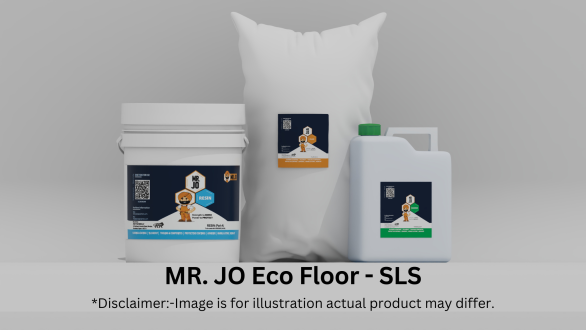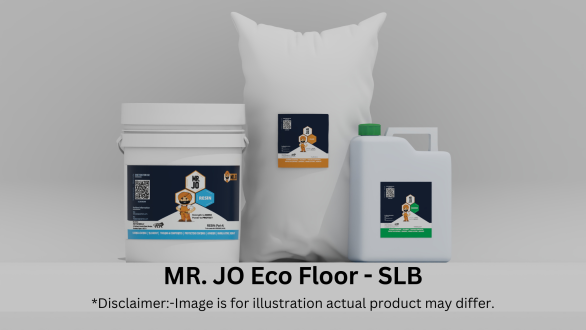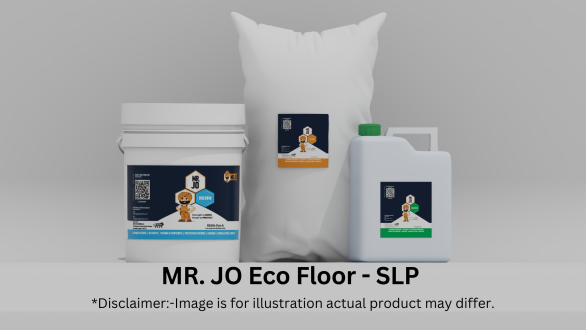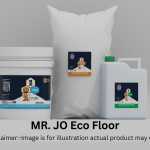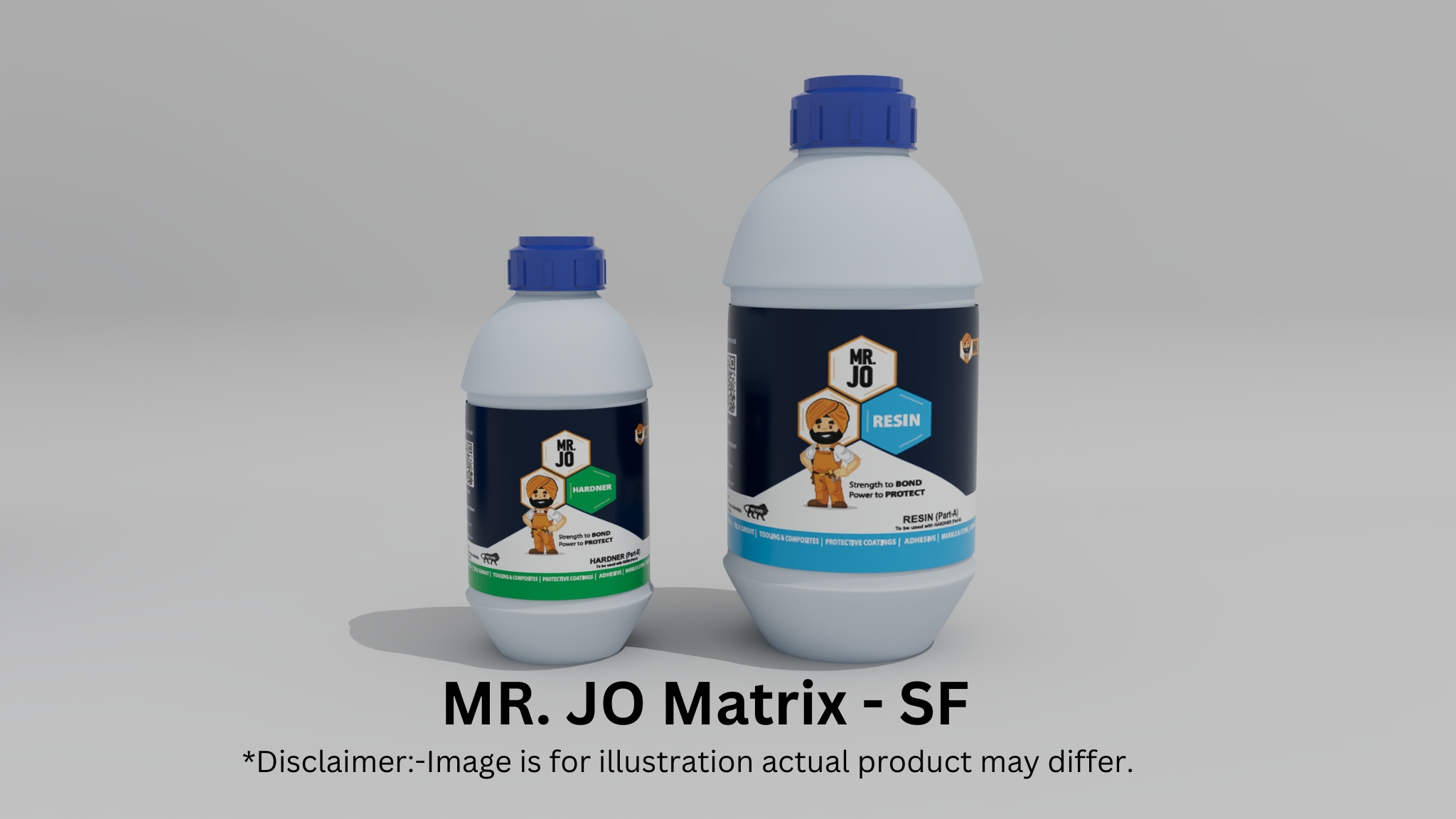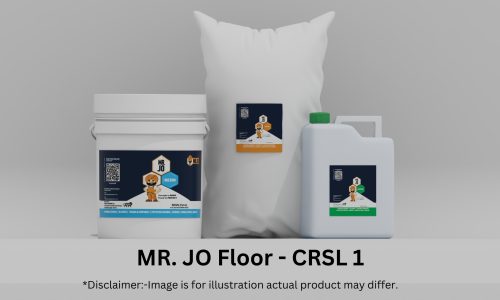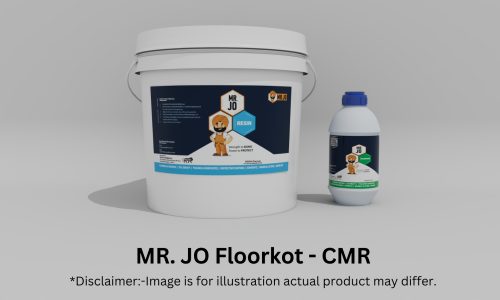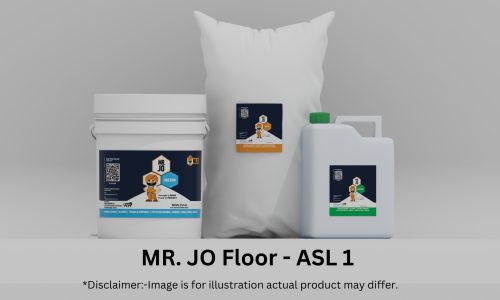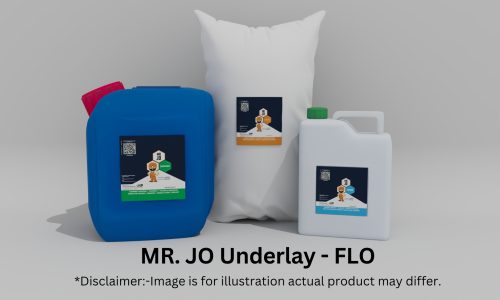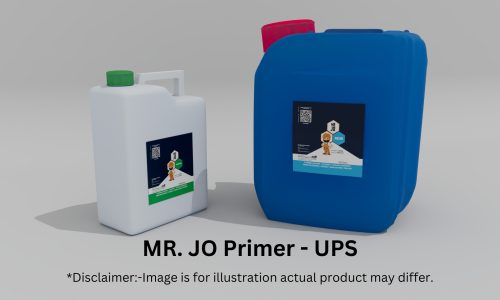MR. JO Eco Floor
₹3,345.00 – ₹18,183.00 Inclusive of all taxes
Self leveling epoxy flooring
- Description
- Properties
- Applications
- How To Use
- Technical Data Sheet(TDS)
- FAQs
Description
MR. JO Eco Floor is a strong, three-part epoxy flooring system. It has no solvent and spreads smoothly to form an even layer. Also, you can use it in places with light, medium, or heavy foot or machine traffic and it gives a smooth, hard surface that blocks water and lasts a long time. Additionally, this floor is easy to clean and keeps spaces hygienic. That makes it perfect for factories, hospitals, kitchens, and cleanrooms.
- Pot life @25°C: 60-80 mins (SLP)
- Mixing Ratio: 100:50:120 (0.5mm thickness) 100:50:150 ( 1mm thickness ) 100:50:180 (2mm thickness )
- Coverage: 0.8 m2/kg (0.5mm) 1.6 m2/kg (1mm) 3.2 m2/kg(2mm)
- Easy to Apply & self leveling
- Available in two options: Neutral &
- Factory pigmented
- Seamless and Impervious
- Excellent mechanical properties
- Excellent adhesion to substrate like concrete
- Durable, hygienic and attractive
- Garage
- Mechanical workshops
- Warehouses
- Parking area
- Industrial shed
- Surfaces should be freed from laitance and dust by sand-blasting. In case sand blasting is not possible, thorough abrading with a hard wire brush should be preferable.
- Suitable degreasing agent should be used to remove any grease, oil or traces on the surface.
- Repair the surface with MR. JO Tecseal - CRP if damaged. Allow 3-4 hours for surface of repaired area to dry
- Apply MR. JO Eco Primer-P50i for better adhesion on substrate. Allow 4-5 hours for surface of repaired area to dry.
- An underlay is suggested if the substrate is badly damaged or is prone to high level of mechanical abrasion. Apply MR. JO Eco Underlay-IFLO and allow 4-5 hours for surface of repaired area to dry.
- Mix the binder and designed aggregate provided in kit thoroughly for at least 2minutes. Apply the mix directly by pouring and spreading with the help of trowel.
- Allow 5-6 hour for surface to dry and 24 hours to achieve full strength flooring.
A1. MR. JO EcoFloor is a 3-component, self-leveling epoxy flooring system used to create smooth, durable, and chemical-resistant industrial floors. It includes:
- Resin
- Hardener
- Filler/aggregate
A2.
- SLP – Standard grade with ~60–80 min pot life, suitable for most projects
- SLB – Short pot life (~40–60 min), for faster turnarounds
- SLS – Long pot life (~80–100 min), improved flexibility, abrasion, and impact resistance
A3. Supplied in kits for:
- 0.5 mm (dustproofing, smooth finish)
- 1 mm (medium-duty areas)
- 2 mm (heavy-duty areas)
A4. Yes.
- Factory-pigmented versions (pre-colored)
- Neutral version for on-site tinting using MR. JO ArtPigment (add 4–6% of resin weight)
A5.
- Industrial floors
- Warehouses
- Labs and cleanrooms
- Garages, workshops, and commercial kitchens
A6. Two systems are recommended:
- Standard system:
- MR. JO EcoPrimer
- MR. JO EcoUnderlay (2–3 mm screed)
- MR. JO EcoFloor (0.5–2 mm)
- Direct floor finish:
- MR. JO EcoPrimer
- MR. JO EcoFloor only (1–2 mm)
A7. Not directly. Use MR. JO EcoUnderlay first to level and repair the surface.
Q8. How do I choose between MR. JO EcoFloor-SLP, SLB, and SLS?A8.
- SLP: Most common, balanced performance
- SLB: Use when faster recoat/curing is needed
- SLS: Choose for better mechanical performance or slightly higher working time
A9.
- SLB: 40–60 minutes
- SLP: 60–80 minutes
- SLS: 80–100 minutes (All at 25°C)
A10.
- Light foot traffic: ~24 hours
- Full cure: 5–7 days (Accelerated in warm, dry conditions)
A12. Regular cleaning with non-abrasive detergents. Avoid acidic or solvent-based cleaners.
Q13. Is it UV-resistant?A13. Like most epoxy floors, minor yellowing may occur under UV. Use UV-stable topcoats for exposed areas.
Q14. How should leftover components be stored?A14. Store each component in a cool, dry, sealed container. Shelf life: ~12 months if unopened.
Q15. Can I tint MR. JO EcoFloor using MR. JO ArtPigment?A15. Yes. The neutral version of MR. JO EcoFloor is designed to be tinted on site using MR. JO ArtPigment pastes. This allows flexibility in choosing custom colors during application.
Q16. How much pigment should I add to the epoxy system?A16. Add 4–6% of MR. JO ArtPigment based on the resin component weight (not total mix). Example: For 10 kg of resin, use 400–600 grams of pigment paste.
Q17. Can I mix different MR. JO ArtPigment colors to get custom shades?A17. Yes, ArtPigments are intermixable. You can blend two or more to create custom tones. Always do a small trial batch first to confirm shade and opacity.
Q18. What color options are commonly used for floors?A18. Popular flooring colors include:
- Light Grey, Steel Grey, Traffic Yellow
- Signal Red, Oxide Red, Green, Blue, Black, and White These can be achieved with factory pigments or by tinting the neutral MR. JO EcoFloor.
A19. Yes, by using white or clear base pigments. For subtle pastel tones, use a neutral EcoFloor base and limit pigment to ~4%.
Q20. What happens if I exceed 6% pigment addition?A20. Excess pigment can affect:
- Curing performance
- Mechanical strength
- Surface gloss and leveling Always stay within 4–6% for optimal results.
A21. Not significantly. However, ensure the pigment is fully mixed into the resin before adding hardener, to avoid streaks and inconsistencies.
Q22. Can I use MR. JO ArtPigments for other epoxy products?A22. Yes — ArtPigments are compatible with:
- MR. JO Tecbond adhesives
- MR. JO Floorkot coatings
- Clear systems where color is needed But always match the pigment to the base resin system and application use.
A23. Yes:
- Mix ArtPigment thoroughly into the resin
- Then add and mix the hardener
- Finally, incorporate the filler (if part of a 3-component system)

